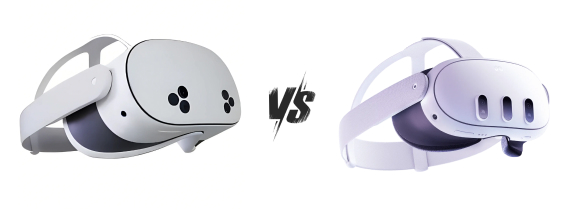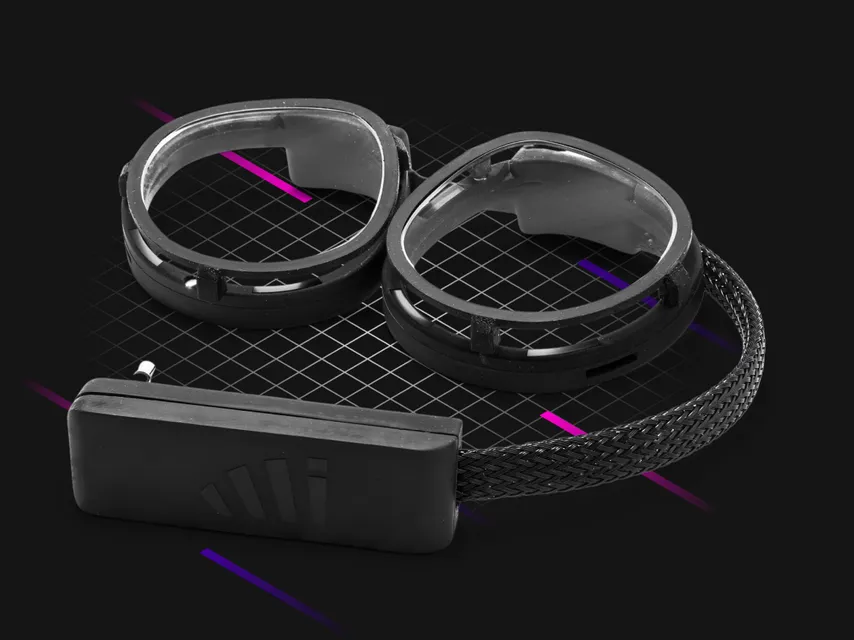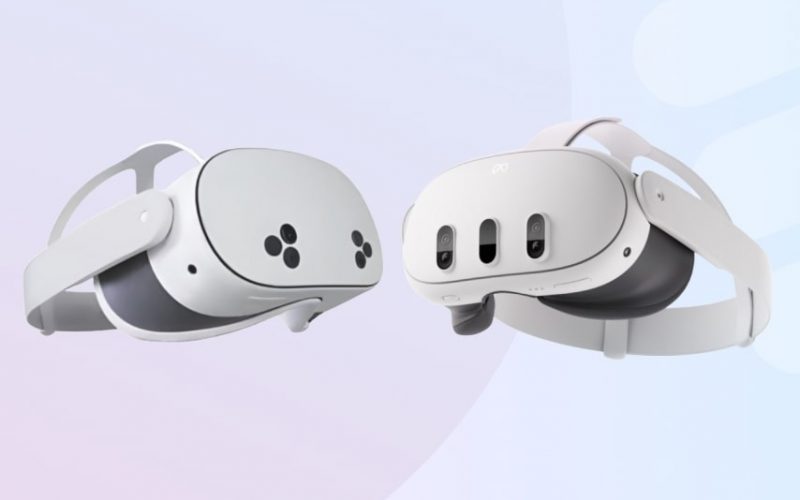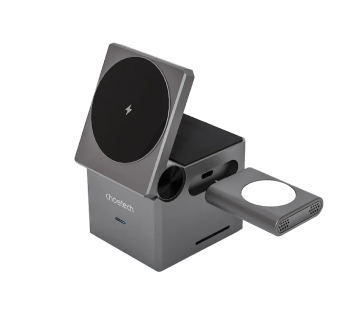Meta is on a streak of launching VR headsets, and if you’re on the fence about choosing between the Meta Quest 3 and the 3s, I’ll guide you through their feature differences to help you decide if the Meta Quest 3 is worth the extra buck.
At the end of the article, I’ve included an eye-tracking device you can incorporate into your gaming sessions to make them more immersive. Now, let’s get into the verdict based on my extensive research.
Table of Contents
Meta Quest 3 vs 3s: The Verdict

Meta Quest 3 Wins as the Overall Better Model!
Is the Meta Quest 3 really worth the extra buck? After diving deep into its features and comparing it to its predecessor, I believe the answer leans toward a resounding “yes.” The Quest 3 offers substantial improvements that justify its higher price point, especially for users looking for a more immersive and versatile VR experience.
Why is Meta Quest 3 worth it?
The Meta Quest 3 spices up the whole user experience in virtual reality with its upgraded display and mixed reality (MR) capabilities. With a resolution of 2064×2208 pixels, Quest 3 delivers sharper visuals compared to the 1,832 by 1,920 per eye for 773 pixels per inch of the Quest 3s.
Quest 3’s full-color passthrough opens up new possibilities for MR experiences that’ll allow you to interact with your real-world surroundings while engaging in virtual activities. This feature alone elevates the headset from being just another VR device to a more comprehensive mixed-reality platform.
However, I also recognize that the Meta Quest 3 comes at a price—starting at $499 for the base model. It does offer MR, but not on the same level as Quest 3. So, if you primarily want to enjoy casual gaming or basic VR experiences, this might feel like overkill.
Why buy Meta Quest 3S?
If you’re tight on budget, the Meta Quest 3S remains a fantastic option. It starts at $299 and provides access to a robust library of games without the premium features of its more expensive sibling.
And if you’re a newcomer to VR who wants to dip their toes into this exciting technology without making a hefty investment, it’s again a fantastic choice you may consider adding to your shopping cart.
If you’re still on the fence about which headset to choose, I encourage you to read on for a more detailed comparison.
Best Overall: Meta Quest 3
After closely examining feature differences (covered in the next section) the Meta Quest 3 takes the lead. Its upgraded graphics and improved comfort level make it perfect for serious gamers and tech enthusiasts to dive into. The investment in this headset pays off in terms of visual fidelity and immersive experiences that can keep you engaged for hours on end.
Best Budget-Friendly: Meta Quest 3S
The Meta Quest 3S stands out as the best budget-friendly option in today’s VR market. At just $299, it allows you to explore a wide range of VR experiences without stretching your wallets too thin. While it lacks some of the advanced features found in the Quest 3, it still offers a solid performance and access to an extensive library of games that will satisfy most casual gamers.
Best for Casual Users: Meta Quest 3
If you’re someone who enjoys VR but doesn’t want to dive too deep into technical specifications or high-end features, then the Meta Quest 3S is your best bet. It offers essential VR capabilities without overwhelming complexity—making it an excellent choice for families or individuals just starting their virtual journey.
Best for Gamers: Meta Quest 3
For dedicated gamers seeking an edge in performance, the Meta Quest 3 is hard to beat. Its graphics and improved tracking make gaming sessions more enjoyable and competitive. If you’re planning on spending significant time in VR, this headset will provide an experience that feels both responsive and immersive.
Best for Mixed Reality: Meta Quest 3
The standout feature of the Meta Quest 3 is undoubtedly its mixed reality capabilities. With advanced passthrough technology that allows users to see their surroundings in full color, this headset opens up new avenues for gameplay and interaction with both virtual and real-world elements. If mixed reality is something you’re interested in exploring, then investing in the Quest 3 makes perfect sense.
Best for Portability: Meta Quest 3
Both headsets are relatively lightweight and portable; however, if you’re looking for something easy to take on-the-go, the Meta Quest 3S may be more appealing due to its simpler design and lower price point. This makes it an excellent choice for users who want a hassle-free VR experience without needing additional accessories or upgrades.
Meta Quest 3 vs 3s: Detailed Comparison
Disclaimer: This is not a product review. I’ve gathered information from multiple sources, verified its accuracy, conducted additional research, and condensed it all into this section. I haven’t personally tested these devices.
| Feature | Meta Quest 3 | Meta Quest 3S |
| Price (MSRP) | $499 (512GB) | $299 (128GB) / $399 (256GB) |
| Release Date | October 10, 2023 | October 15, 2024 |
| Dimensions | 184 mm x 160 mm x 98 mm | 184 mm x 160 mm x 98 mm |
| Weight | 515 grams | 514 grams |
| Display Type | Dual LCD displays | Dual LCD displays |
| Display Resolution | 2064 x 2208 pixels per eye | 1832 x 1920 pixels per eye |
| Field of View (FOV) | 110 degrees horizontal, 96 degrees vertical | 96 degrees horizontal, 90 degrees vertical |
| Refresh Rate | Up to 120Hz | Up to 120Hz |
| Chipset | Qualcomm Snapdragon XR2 Gen 2 | Qualcomm Snapdragon XR2 Gen 2 |
| RAM | 8GB | 8GB |
| Storage Options | 512GB | 128GB or 256GB |
| Battery Life | Approximately 2.2 hours | Approximately 2.5 hours |
| Mixed Reality Cameras | Dual RGB cameras (4MP each) | Dual RGB cameras (4MP each) |
| Optics | Pancake lenses | Fresnel lenses |
| Audio | Enhanced near-field speakers | Standard near-field speakers |
| Connectivity | Wi-Fi 6E, Bluetooth 5.2 | Wi-Fi 6, Bluetooth 5.0 |
| Controller Type | Meta Quest Touch Plus | Meta Quest Touch Plus |
When comparing the Meta Quest 3 and Meta Quest 3S, the core differences can significantly impact your user experience. The Quest 3 features a higher resolution of 2064×2208 pixels per eye, compared to the 1832×1920 pixels of the Quest 3S. This means that if you’re looking for stunning visuals and immersive gameplay, the Quest 3 is the better choice. Its advanced pancake lenses also cut down on distortion, giving you clearer visuals and more comfort during long gaming sessions.
On the other hand, the Meta Quest 3S is perfect for those just starting out in VR or who want a solid headset without spending too much. While it lacks some of the premium features of the Quest 3, it still delivers a great experience for casual gaming and entertainment at a more affordable price.
Supercharge Your VR Experience with Inseye Lumi

Link to Product: Prelaunch
Specifications:
- Eye Tracking Frequency: 1000Hz
- Power Consumption: Approximately 50mW
- Latency: Less than 1 millisecond
- Compatibility: Meta Quest 2 and Quest 3
- Connection: USB-C and headphone jack
- Price: $160 (with a promotional deposit option available)
As a VR enthusiast, I find Inseye Lumi to be an exceptional camera-free eye-tracking accessory for Meta Quest 2 and 3 that can make your game players even more immersive. With its six advanced photosensors and a super-fast 1000Hz precision, it really amps up the whole predictive foveated rendering experience. This means better visual quality and performance while gaming. Plus, the best part? It achieves high-fidelity gaze tracking without needing any cameras, which makes interactions feel way more immersive.
Looking to discover more innovative products? Check out our marketplace at Prelaunch Marketplace for the latest projects and exclusive offers!
Conclusion
To wrap up, both headsets have their strengths, but I think the Meta Quest 3 is definitely worth the extra investment if you’re looking for cutting-edge technology and an immersive experience. Its superior graphics and mixed reality features make it a top choice for serious VR enthusiasts.
On the flip side, if you’re on a budget or new to virtual reality, the Meta Quest 3S is a great alternative that offers solid performance without breaking the bank. At the end of the day, your decision will depend on whether you want the latest advancements or a reliable entry point into VR.



